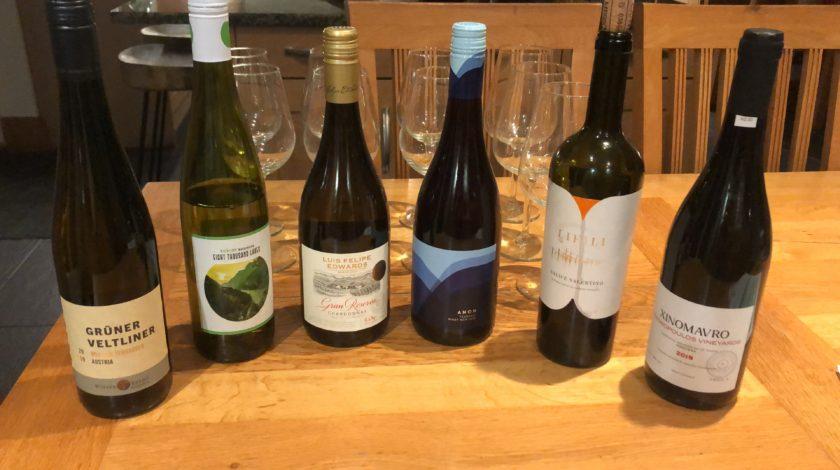Being separated from friends and loved ones has been the absolute worst consequence of the past year. What I wouldn’t give to be sat at a wine bar having a good old catch up…hopefully soon. But my lovely friends have been gracious enough to be my guinea pigs for some DIY tastings where even virtual life couldn’t prevent the usual merriment and subsequent “need for a cold flannel over the eyes”* the next morning.
*genuine hangover cure for one of my pals; sadly she wouldn’t let me share the photo evidence…
For our latest virtual event I wanted to use it as an excuse to try some more unusual grapes and regions. We’re so lucky here in the UK to have so many wines at our fingertips these days and I was keen to sample a few things you wouldn’t necessarily pick off the shelf; to share some insights into where these wines came from and why it was worth trying something a bit different.
Our Top Three Tastings:
(1) Gruner Veltliner, Austria: I chose this one as some of my friends have started enjoying some Austrian Rieslings lately but Gruner Veltliner is actually Austria’s signature and most widely planted grape variety. We drank Winzer Krems 2019 Gruner Veltliner which is from the Niederosterreich region at the gateway to the World Heritage cultural landscape of Wachau – one of the most beautiful stretches of river valley in Europe. The estate is actually owned by 900 winegrowers who grow their grapes over 1200 hectares (…that’s 3000 acres) and nearly the whole harvest is carried out by hand! Classic young Gruner Veltliner is dry and refreshing – this was zesty lemon and peach with a hint of spice, very easy drinking and enjoyable. A good one to kick us off and enjoyed all round, great value for money (£8 a bottle).
(2) Pinot Noir, Tasmania: Tasmania currently produces less than 1% of Australian wine but it’s growing in prominence. Its cool climate means the fussy, thin-skinned grape variety of Pinot Noir is able to grow successfully there. We drank 2016 ‘Anon’ which was a great example of juicy Pinot – strawberry and cherry fruit flavours with a silkiness from the soft tannins. Easy drinking and delicious for £9 a bottle.
(3) Xinomavro, Greece: This one I was very intrigued to try. Greece is not exactly the place I’d think of for great wines having had some atrocious stuff on past holidays but there are some increasingly interesting wines coming out of Greece and while there are over 200 grape varieties in Greece alone, Xinomavro is one of their most famed varieties. We tried the Thymiopoulos Vineyards (£15 a bottle) from Naoussa in Northern Greece. This is a family owned vineyard who produced their first wine in 2005. While Xinomavro definitely has the potential to age we drank this young (2018) – it had both red and black fruit favours which gave it more complexity with a vibrant acidity. It was a definite crowd pleaser for a group who often like lighter, fruity Pinots but enjoyed the added complexity of some darker fruit flavours. Xinomavro, particularly when aged, is likened to some Italian Barolos so I was expecting a richer wine but this was still delicious and I will certainly be seeking out some more examples to try.


